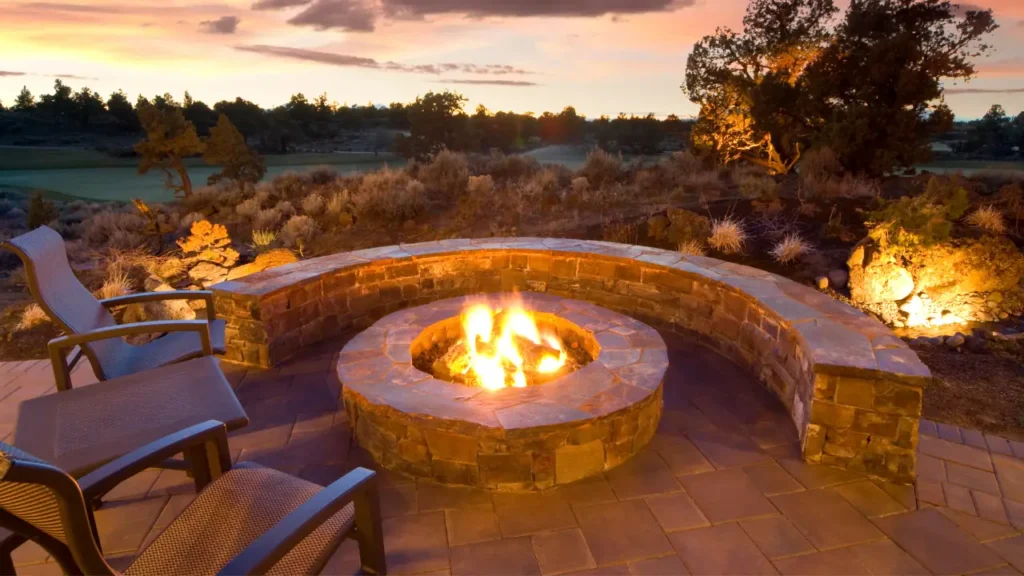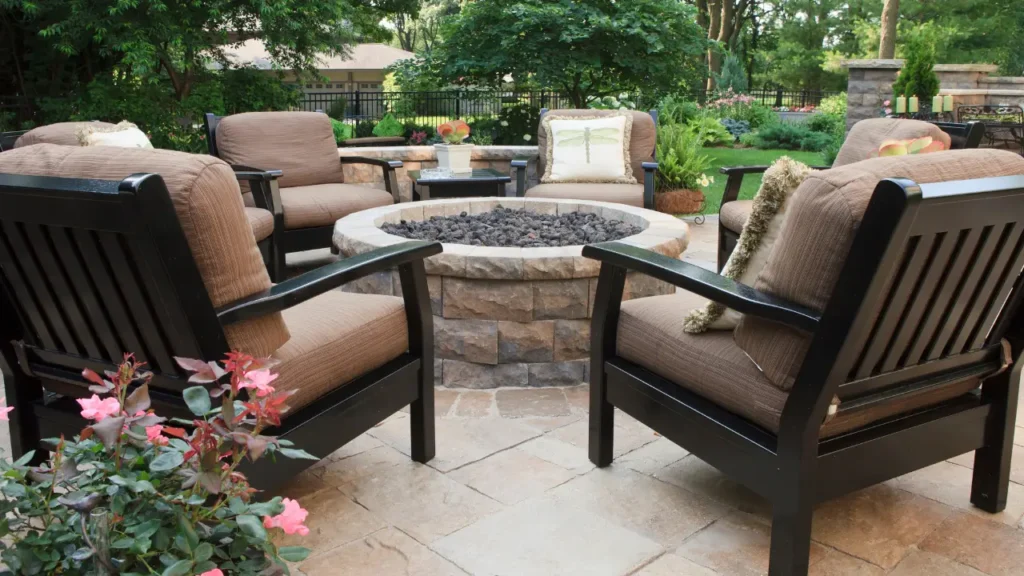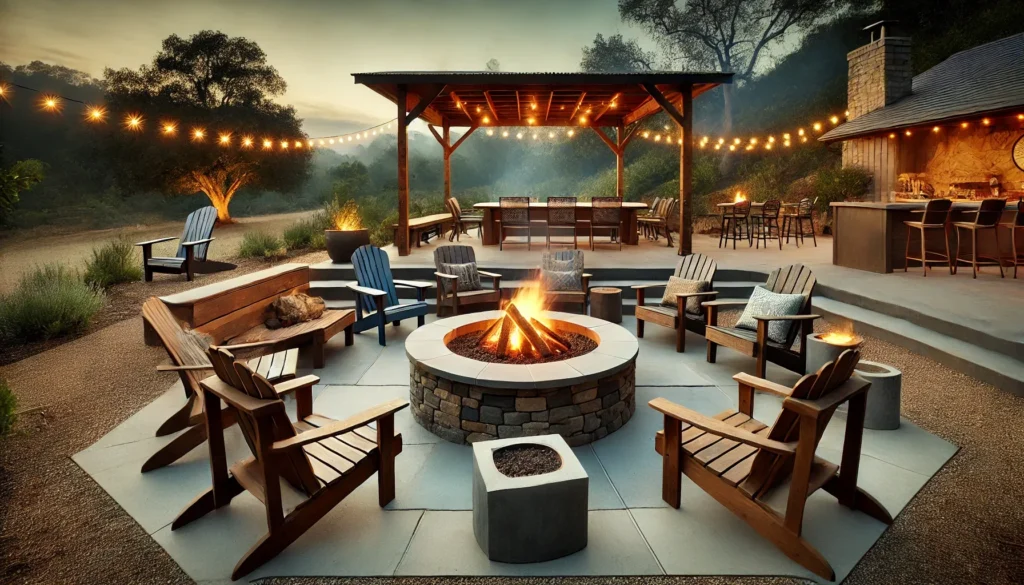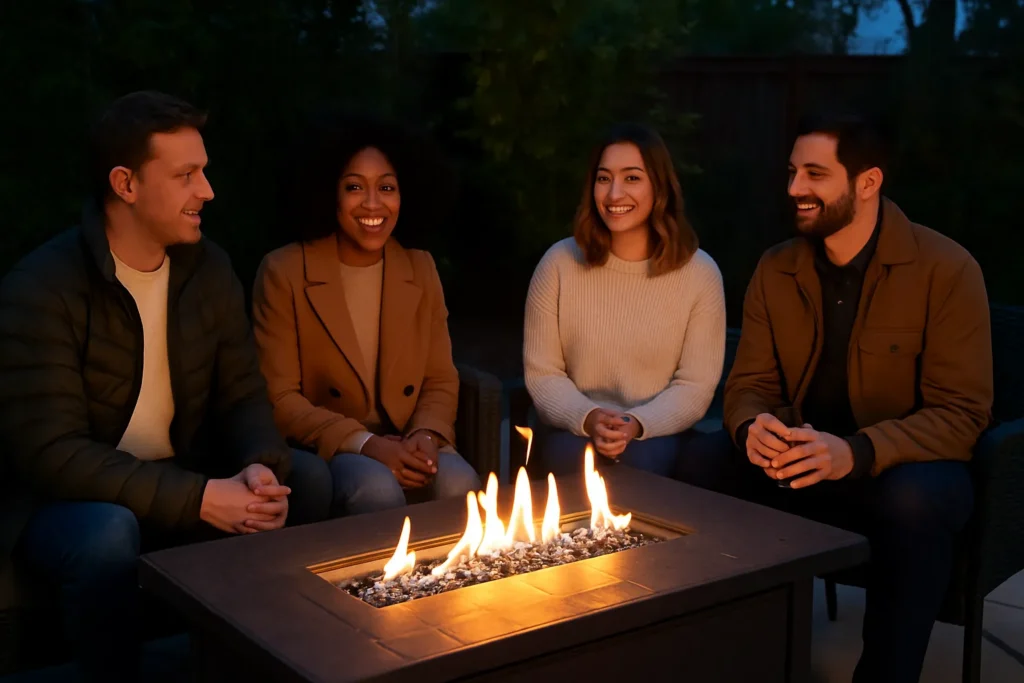Creating a safe outdoor living space where you can enjoy the warmth and ambiance of a fire pit on your deck requires careful planning and the right protective materials. Placing a fire pit directly on a wooden or composite deck without proper protection can lead to severe fire hazards, structural damage, and costly repairs.
The ideal solution involves using a fire pit pad or heat-resistant barrier that can withstand temperatures up to 1400°F while providing adequate insulation for your decking material.
Key Takeaways
- Safety First: Always use a fire pit pad or heat-resistant barrier under your fire pit on any deck surface.
- Material Matters: Different deck materials (wood, composite, PVC) require specific types of protection.
- Size and Clearance: Ensure your protective barrier extends at least 24 inches beyond all sides of the fire pit.
- Ventilation is Crucial: Proper airflow prevents heat buildup and potential damage to your deck.
- Local Regulations: Check with your local fire department for specific codes regarding fire pits on decks.
Why You Can’t Place a Fire Pit Directly on Your Deck
When it comes to outdoor living spaces, adding a fire pit to your deck creates a cozy gathering spot for friends and family. However, the combination of high heat and potentially flammable decking materials creates significant risks that must be addressed.
Wooden decks can ignite when exposed to sustained temperatures above 500°F, while composite decking materials may soften, warp, or melt at even lower temperatures. Additionally, embers and sparks can escape from the fire pit, creating secondary fire hazards on your deck surface.
According to the National Fire Protection Association, outdoor fire pits and grills cause an average of 4,300 home fires annually, making proper protection essential.
Essential Fire Pit Protection Materials for Your Deck
Fire Pit Pads and Mats
Fire pit pads for decks are specifically designed to protect your deck from heat, sparks, and embers. These protective barriers come in various materials and sizes:
| Material Type | Heat Resistance | Durability |
|---|---|---|
| Vulcanized Fiber | Up to 1400°F | Good |
| Ceramic Fiber | Up to 2000°F | Excellent |
| Mineral Composite | Up to 1200°F | Good |
| Silicone-coated Fiberglass | Up to 800°F | Fair |
When selecting a fire pit pad, choose one that extends at least 24 inches beyond all sides of your fire pit to ensure complete protection.
Heat-Resistant Pavers and Stones
For a more permanent solution, consider creating a base using heat-resistant pavers or natural stones. This approach not only provides excellent protection but can also enhance the aesthetic appeal of your outdoor space.
Heat resistant materials for fire pits include:
- Flagstone
- Concrete pavers
- Fire bricks
- Slate tiles
These materials should be installed with proper clearance from the deck surface, typically using metal standoffs or a raised frame to allow for air circulation.
Metal Fire Pit Trays and Pans
Metal trays and pans designed specifically for fire pits offer another layer of protection. These containers catch embers and radiate heat away from your deck surface.
Look for products made from:
- Stainless steel
- Powder-coated steel
- Copper
- Cast iron
Deck-Specific Considerations
Protection for Wooden Decks
Wooden decks require the most stringent protection measures due to wood’s combustibility. When using a fire pit on a wooden deck, consider these additional precautions:
- Use a double-layer protection system: a fire pit pad combined with a metal tray
- Maintain a minimum clearance of 3 feet between the fire pit and any railings or walls
- Install a spark screen to contain embers
- Keep a fire extinguisher readily accessible
Safeguarding Composite Decking
While composite decking is often marketed as “fire-resistant,” it’s not fireproof. These materials can soften, warp, or melt when exposed to high temperatures. For fire pit on composite decking:
- Check with the manufacturer for specific recommendations regarding fire pits
- Use a fire pit pad rated for at least 600°F
- Consider elevating the fire pit to increase airflow underneath
- Avoid using gel fuel or alcohol-based fire pits, which burn hotter than wood
PVC and Vinyl Deck Protection
PVC and vinyl decking materials are particularly vulnerable to heat damage. These materials can begin to soften at temperatures as low as 160°F, making comprehensive protection essential.
For these deck types, consider:
- Using a raised platform with ceramic tiles or pavers
- Installing a commercial-grade fire pit pad with the highest heat rating available
- Maintaining maximum clearance around the fire pit
Installation Methods and Best Practices
Creating a Raised Platform
A raised platform creates both physical distance and air circulation between your fire pit and deck surface. This method involves building a frame using metal or pressure-treated wood, then filling it with heat-resistant materials.
Steps for creating a raised platform:
- Measure and cut frame materials to size
- Assemble the frame, ensuring it’s level and stable
- Install metal standoffs to create an air gap
- Add heat-resistant pavers or tiles
- Seal edges with heat-resistant caulk
Using Commercial Fire Pit Stand Systems
Several companies offer complete fire pit barrier for deck systems that include stands, pads, and screens. These systems are engineered to meet safety standards and often come with manufacturer warranties.
Popular options include:
- DeckProtect
- Newtex Fire Pit Pad
- Solo Stove Shield
- Pyromat Fire Pit Pad
DIY Fire Pit Protection Solutions
For the handy homeowner, several DIY approaches can provide adequate protection:
- Cement Board and Tile Platform:
- Cut cement board to size
- Install using metal standoffs
- Tile with ceramic or stone tiles
- Grout with heat-resistant grout
- Metal Pan with Sand or Lava Rock:
- Use a large metal pan or tray
- Fill with sand or lava rock
- Place fire pit on top
- Ensure the pan extends beyond the fire pit base
Safety Regulations and Compliance
Understanding Local Fire Codes
Fire pit regulations vary significantly by location. Before installing any fire pit on your deck, consult with your local fire department or building department for specific requirements.
Common regulations include:
- Minimum clearance from structures
- Required spark arrestors or screens
- Seasonal restrictions
- Fuel type limitations
Homeowner’s Insurance Considerations
Installing a fire pit on your deck may affect your homeowner’s insurance coverage. Contact your insurance provider to:
- Notify them of your plans
- Verify coverage for fire pit use
- Understand any specific safety requirements
- Determine if additional coverage is needed
Aesthetic Enhancements and Finishing Touches
Integrating Fire Pit Protection with Deck Design
Your fire pit protection doesn’t have to be purely functional. Consider these design elements to integrate safety features with your deck’s aesthetic:
- Use decorative pavers that complement your deck color
- Create a border using contrasting materials
- Add built-in seating around the fire pit area
- Incorporate lighting for ambiance and safety
Seasonal Considerations and Maintenance
Proper maintenance ensures your fire pit protection system remains effective year after year:
Seasonal Maintenance Checklist:
- Spring: Inspect for winter damage, clean surfaces
- Summer: Regular cleaning of ash and debris
- Fall: Check for wear before heavy use season
- Winter: Proper storage or protection from elements
Cost Comparison of Fire Pit Protection Options
| Protection Method | Initial Cost | Lifespan | Installation Difficulty |
|---|---|---|---|
| Fire Pit Mat | $50-$200 | 2-5 years | Easy |
| Paver Platform | $200-$500 | 10+ years | Moderate |
| Commercial System | $150-$400 | 3-7 years | Easy |
| DIY Cement Board | $100-$300 | 5-10 years | Difficult |
You May Also Like:
FAQs
What is the best material to put under a fire pit on a deck?
The best material depends on your deck type and fire pit usage. For most applications, a commercial fire pit pad made from vulcanized fiber or ceramic fiber offers the best combination of heat resistance, durability, and ease of installation.
Can I use pavers under my fire pit on a deck?
Yes, pavers can be an excellent option when installed properly. They should be raised above the deck surface using metal standoffs to allow for air circulation and prevent heat transfer to the decking material.
How much space do I need around a fire pit on a deck?
Most safety codes recommend maintaining at least 3 feet of clearance between the fire pit and any structures, railings, or combustible materials. Your protective pad should extend at least 24 inches beyond all sides of the fire pit.
Affiliate Disclosure: Fireplaceadviser.com is a participant in the Amazon Services LLC Associates Program. We may earn a commission when you click on certain links on this site and purchase.

Hello!! I am Jamal Khan. I often fix my home electric heaters and gas stove problems and research the common issues in the heating units to improve my knowledge and expertise. The aim of establishing fireplaceadviser.com is to share my expertise and knowledge with my audience.

















